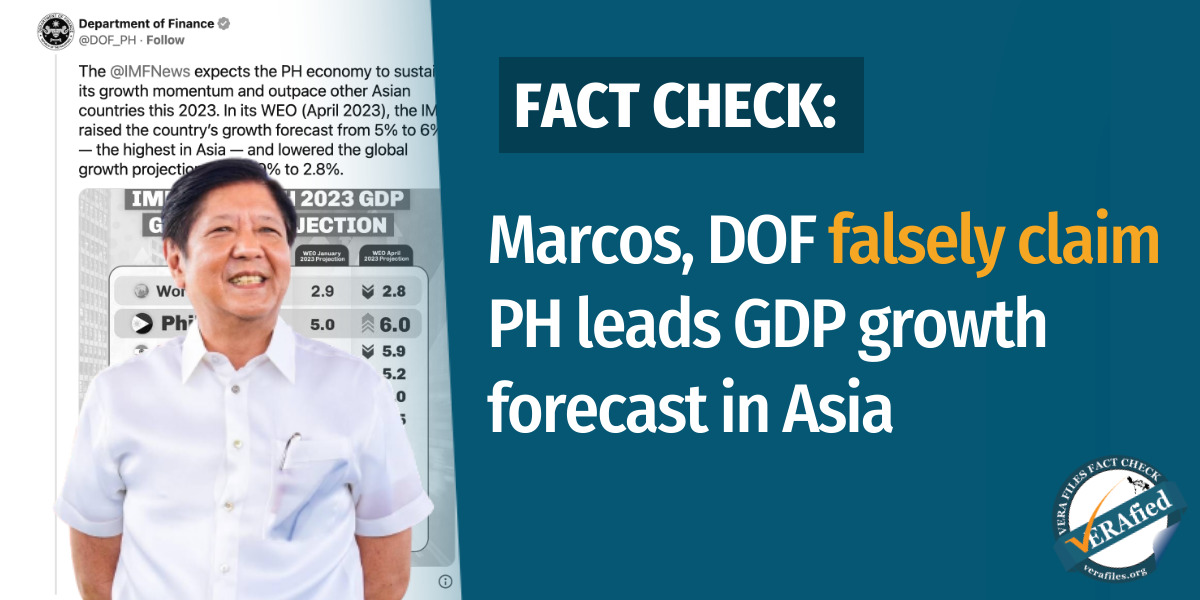Reacting to the country’s 8.1% inflation rate posted in December 2022, President Ferdinand “Bongbong” Marcos Jr. noted that the increase in prices of goods and services is slowing. This needs context.
STATEMENT
In a press conference wrapping up Marcos’ three-day state visit to Beijing on Jan. 5, a reporter asked the president for his comment on the inflation rate in the last month of last year. Marcos replied:
“Yeah, well at least 8.1 nag-increase lang ng (it went up only by) 0.1 [%] and the rate of increase is slowing.”
Source: Office of the Press Secretary, Official transcript of President Ferdinand R. Marcos Jr. at the Kapihan with the Media (archived), Jan. 5, 2023
Marcos added:
“It’s still agricultural products, 38% of the inflation — 11% is fuel, 38% is agricultural products pa rin. Kaya’t kailangan talagang ayusin ‘yung production natin. Kasi import tayo nang import, so ‘yung inflation doon sa ini-importan natin nadadala dito sa Pilipinas.”
(It’s still agricultural products, 38% of the inflation – 11% is fuel, 38% is still agricultural products. So we need to improve our production. Because we import a lot, so the inflation [rate] from where we are importing is carried over here in the Philippines.)
FACT
There was indeed a slowdown in the country’s inflation rate in the last month of 2022 as indicated by the lower monthly growth rate of the seasonally adjusted consumer price index (CPI), a measure of overall cost of goods and services bought by a typical consumer, from October to December.
However, the December 2022 inflation rate is still the highest since the 9.1% posted in November 2008, according to the Philippine Statistics Authority (PSA) in a Jan. 5 press briefing. Inflation in the country is also the fastest in 14 years, financial data and media company Bloomberg reported on Jan. 5.
“So ‘yung seasonal adjusted incremental increases, pabagal nang pabagal (are slowing down). Also, kung makikita natin doon sa (we can see in the) not seasonally adjusted, you will see na from 8.0 to 8.1% basically if you do a test, this is not really significant,” PSA Undersecretary Dennis Mapa said in the same press briefing.
While this downward trend may be “good news,” he warned that “there are still threats” to inflation, citing the prices of vegetables and agricultural products which accelerated the increase in prices in December to 8.1% from 8.0% the previous month. Mapa noted that the top five groups in the food basket included in the country’s CPI contributed 10.6% to the December inflation rate. These are:
- Vegetables
- Meat
- Sugar, confectionery and desserts
- Fish
- Flour and other bakery products
“There are still threats, like for example ‘yung prices of vegetables that contributed really (substantially) in the inflation and then also ‘yung iba pang (the other) food items,” Mapa pointed out.
Have you seen any dubious claims, photos, memes, or online posts that you want us to verify? Fill out this reader request form.
Sources
Office of the Press Secretary, President Ferdinand R. Marcos Jr. at the Kapihan with the Media, Jan. 5, 2023
Philippine Statistics Authority, Press Conference on December 2022 Inflation, Jan. 5, 2023
Philippine Statistics Authority, Summary Inflation Report Consumer Price Index (2018=100): December 2022, Jan. 5, 2023
Philippine Statistics Authority, Seasonally Adjusted Consumer Price Index (2018=100): October 2022, Nov. 4, 2022
Philippine Statistics Authority, Seasonally Adjusted Consumer Price Index (2018=100): November 2022, Dec. 6, 2022
Philippine Statistics Authority, Seasonally Adjusted Consumer Price Index (2018=100): December 2022, Jan. 5, 2023
Bloomberg, Quicker Philippine Inflation Opens Door to Sustained Rate Action, Jan. 5, 2023
Philippine Statistics Authority, CORE INFLATION AND THE ESTIMATION OF CORE INFLATION, December 2018
(Guided by the code of principles of the International Fact-Checking Network at Poynter, VERA Files tracks the false claims, flip-flops, misleading statements of public officials and figures, and debunks them with factual evidence. Find out more about this initiative and our methodology.)




